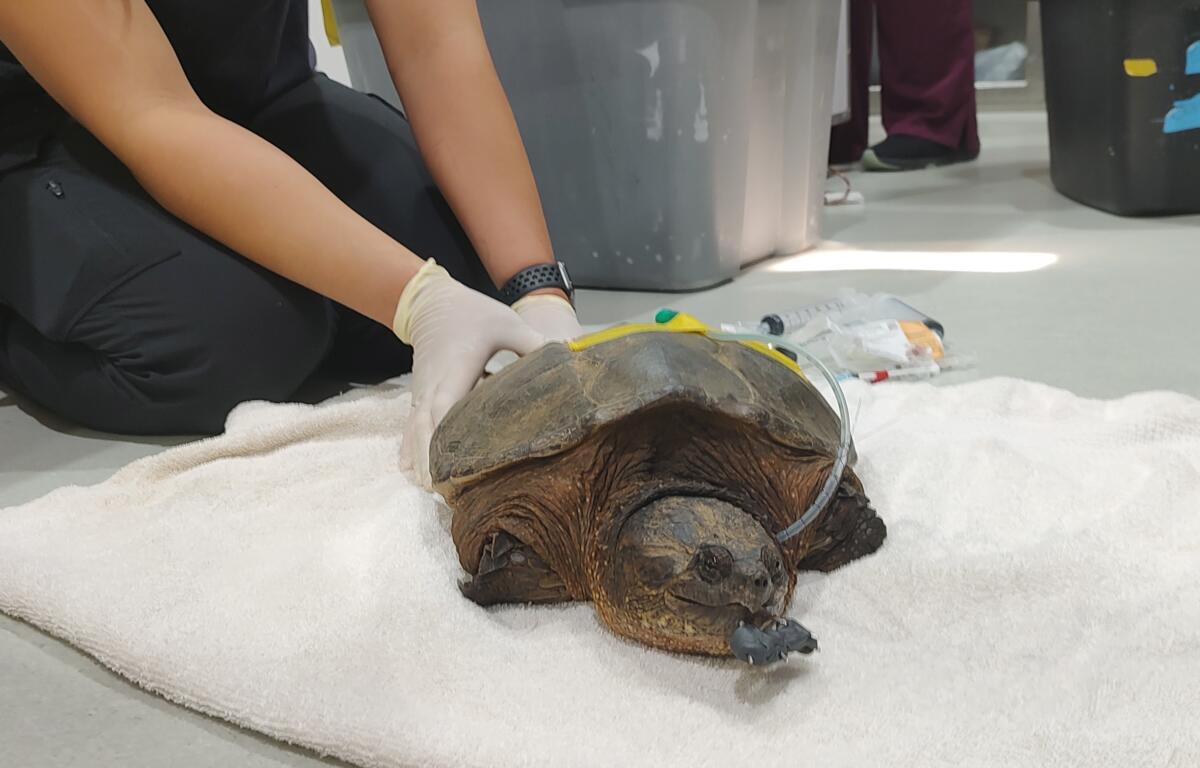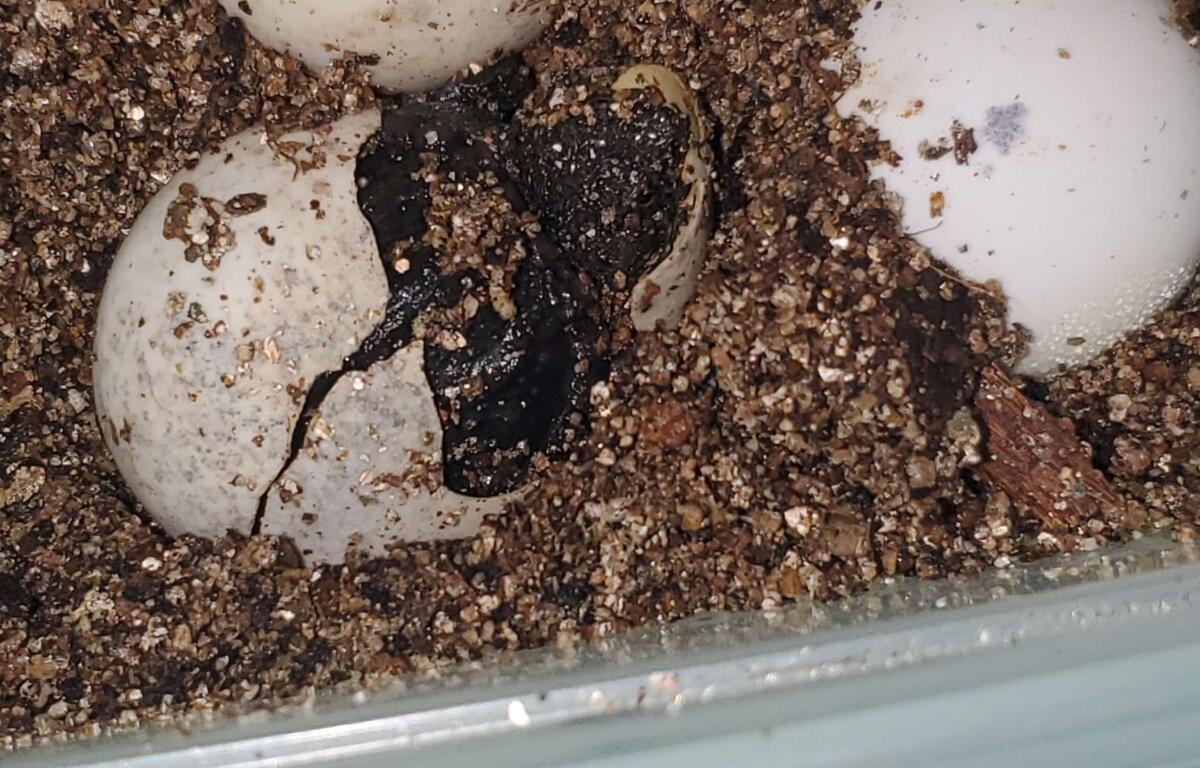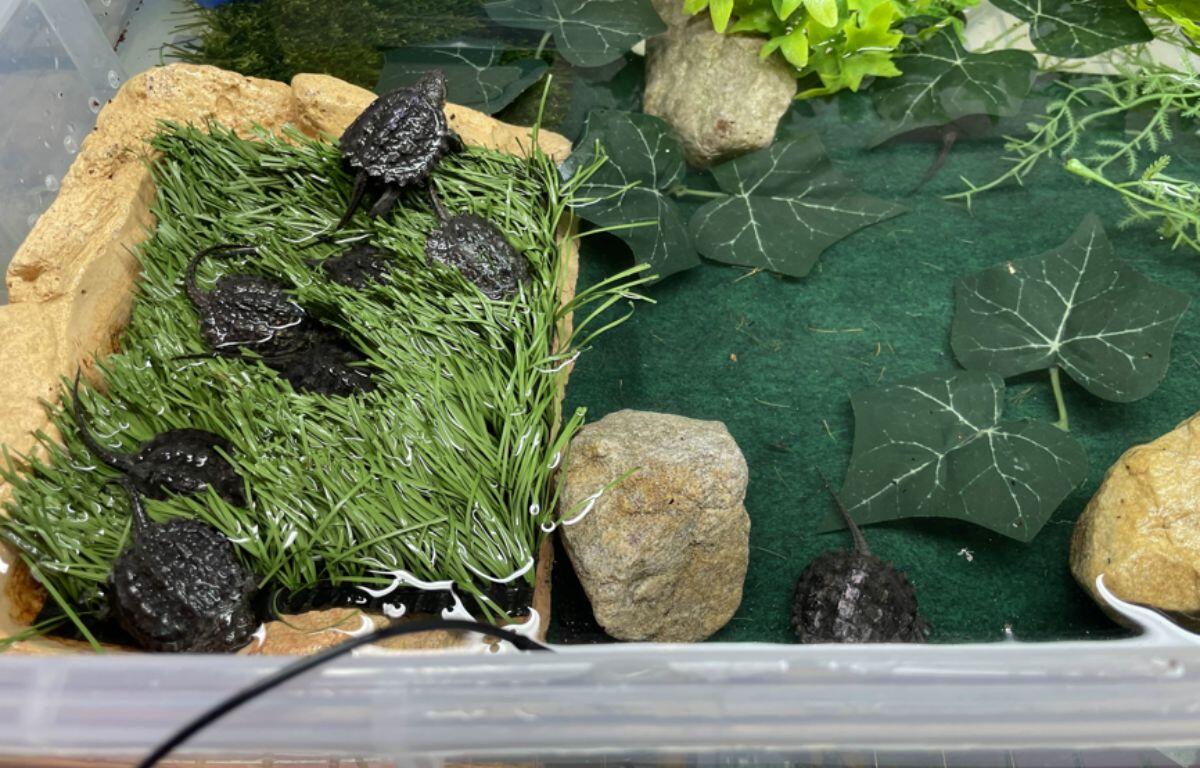WAYNESBORO, VA (Rocktown Now) — In mid-September, the Wildlife Center of Virginia welcomed a special group of patients—13 hatchling Snapping Turtles that emerged from eggs laid at the Center.
The hatchlings’ story began in late spring, when adult Snapping Turtle #25-1859 was admitted on May 30 after being hit by a car in Highland County. Radiographs taken during her exam revealed not only a serious jaw fracture, but also that she was gravid, carrying more than a dozen eggs.

During her two months in care, Snapping Turtle #25-1859 laid her eggs in a soil mixture inside her enclosure. Sadly, despite the veterinary team’s best efforts, her jaw injury did not respond to treatment, and her condition continued to decline. The veterinary team ultimately made the difficult but compassionate decision to euthanize her.
However, Snapping Turtle #25-1859’s story didn’t end there. The Center’s rehabilitation team carefully incubated her clutch of eggs, monitoring them closely throughout the summer. On September 13, during routine morning checks, staff spotted what they had been hoping for: the first tiny turtle had broken free of its shell. Over the next week, the Center welcomed 13 healthy hatchlings.

“They’re all doing really well,” said Wildlife Rehabilitation Supervisor Alex Olvera. “It’s incredible to see how quickly their instincts develop. They’re already swimming and showing typical Snapping Turtle behaviors. One hatchling even started snapping at a leaf we put near him, then chased a piece of moss around his enclosure.”
In their first week at the Center, the hatchlings remain tucked inside damp paper towels, mimicking the protective nest chamber they would rely on in the wild. “Once they hatched, we kept them hydrated and wrapped until their umbilici were fully absorbed,” Alex explained. “That’s when they start to swim. It mirrors what would happen in nature, where they stay in the nest until they’re ready.”
Because these hatchlings emerged late in the season, the Center will keep them through the winter before releasing them to the wild. “We want to give them the best chance possible,” Alex noted. “Reptiles can’t be released past October 1 due to the cold weather, and only about half of these turtles were ready by then. With their umbilicus still attached, they’d be vulnerable in the wild, so overwintering is the safest option.”
In spring, once the weather is warm enough, the Center’s rehabilitation team will release these hatchlings into a safe, suitable habitat near their mother’s rescue location. Though their mother was not able to return home, her offspring will carry her legacy forward into Virginia’s wetlands and waterways.
Please note: if you encounter a nest of turtle eggs in the wild, it is always best to leave them undisturbed. The Wildlife Center only incubated this clutch because they were laid by a patient already in care.




